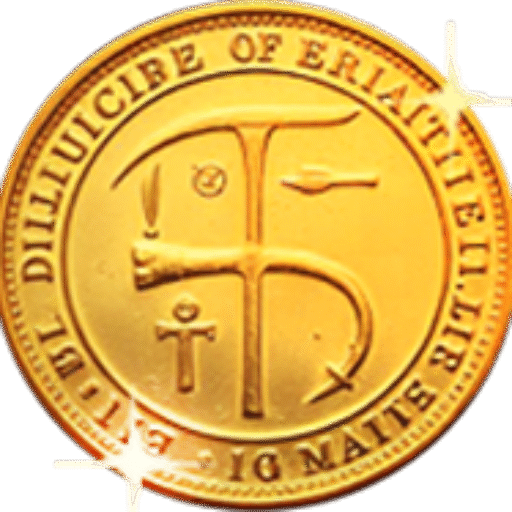The Significance and Value of the 1964 Kennedy Half Dollar Graded MS62

The United States of America swiftly decided to issue and circulate the 50-cent piece because of public interest, but there needed to be more time to strike the coin in time for the Christmas holiday. Many remember Kennedy’s stance regarding civil rights and his work for a new frontier in scientific, educational, and cultural advancements for America. This fascinating half-dollar represents Kennedy’s goals and dreams for the United States of America.
With such a high mintage scheduled for 1964, the Philadelphia Mint created a new bag of half-dollar dies. The rubbing process from February 11, 1964, to February 26, 1964, yielded 30 working hubs. Dies with a single small and significant date will be created and finished on hand-fed presses.
These hand-fed presses and techniques produced coarse, frosty white luster appearances on 1964 Proof Kennedy half dollars. These first trial strikes of the Kennedy half dollar were proof-like, and the best coins were found throughout the U.S. in 1964. Proof-like strikes typically come from the Philadelphia Mint and are in great demand—often earning the grade of Deep Cameo.
On November 22, 1963, one of the most beloved American presidents—John F. Kennedy—was assassinated while riding in a motorcade in Dallas, TX. The nation is mourning the loss of a vibrant and charismatic leader. After the tragic event, many collectors, numismatists, and American citizens grasped the significance of renaming the Franklin half dollar to the Kennedy half dollar. America and the pool of numismatics wanted and needed to celebrate the life and accomplishments of JFK. Although there was controversy over the choice, most were in favor.
Even children would begin the tradition of “flipping” the winged bust of the Franklin half a dollar, called the “Whiz wheel,” with a Kennedy half a dollar. Pointed as one of the greatest American presidents and leaders, he is a beacon of inspiration for locals and foreigners. His celebrated work in the military, as a student, and as a Secretary of State can be seen in the bright, sharp images of 1964 Kennedy dollars to the public.
Understanding Grading in Numismatics
When determining the grade of a coin, one must determine the market value of a coin based on the assigned grade. Not only is the technical/numerical grade taken into consideration, but the factors (“the holder” or “presentation,” the attractiveness or “eye appeal,” color, texture, luster, strength of strike, any “abrasions,” any imperfections, and even historical aspects) are evaluated as each coin is distinct.
Although one must rely on the assigned grade on a coin when dealing with a potential trade or sale, as not all buyers or sellers will possess the knowledge and abilities to assign a grade themselves, the process is highly subjective since “to reach a final grade, the market values many attributes of a coin, all of which influence the assigned grade.”
Grading is “the independent academic programs that offer a structured sequence of learning experiences, where each program leads to the qualification to certify an individual’s competence to practice a job or profession or possess the requisite knowledge and skills to perform one’s career.
” Andrew Brown, in his essay, “The Role of Grading,” describes five functions of grading in education: Rating, Ranking, Rewarding, Record, and Residence hall Requirement. When unrelated to education, most commonly, the term is found to be within the field of numismatics, which is the study or collection of currency, including coins, tokens, paper money, and related objects.
Exploring the MS62 Grade
The value commanded by a 1964 Kennedy Half Dollar with a grade of MS62 corresponds to its striking and luster characteristics. The first extreme striking characteristic always apparent is the “split bands.” which refers to the pair of horizontal bands on the right side of the eagle. In these coins, the left band is crisp and distinct; no part of the upper part of this band appears to, while the right band will be weak and possibly broken. At most, two areas can be as a split band.
This coin will also usually have decent luster for only two reasons. First, it is a one-year type coin, so the number of times it has is fewer. Secondly, if stored properly, this coin should have minimal or particularly distracting unattractive toning. It is a fascinating set to put together as a solo set. Populated with all the 1964 mint set coins that grade MS62, it would have a distribution level of just 24 coins. The estimated cost of approximately $30.00 makes this type an excellent way to have some impressive coins close to uncirculated condition.
Factors Affecting the Value of the 1964 Kennedy Half Dollar Graded MS62
This coin has a mintage superior to an average of approximately 50 times and is rare in grades near the edge of the Gem state. If you obtain a 1964 Kennedy Half Dollar in MS62 condition, you can ensure that it would have luster, a decent strike, and no original color. Marks should be throughout the coin with pleasing and original eye appeal. The higher grade ranks only 109,000 coins higher than that of the MS62.
Because of the condition, the piece could still fetch a handsome price at auction if it were to go up that route. With that price, there should be no need to engage in auctions to make money off these coins even though, by looking at the rare coin market, they command a decent value. If the coin is certified by NGC or PCGS, it may be sold or bought online and shipped, sold, and generally bought and sold quickly. These knives are more expensive than their BU counterparts, making them great collectible coins.
The 1964 Kennedy Half Dollar, like most U.S. coinage produced before 1965, is composed of 90% silver. Grading the 1964 Kennedy Half Dollar is essential since the grading process determines the coin’s value. Typically, circulation is the primary factor in reducing the number of 1964 Kennedy Half Dollar coins in high mint-state grades. The 1964 Kennedy Half Dollar has 3,950,762 coins of the mintage remaining, and 594,828 is the number of coins that have survived in MS62 condition through the ranking service of PCGS or NGC. MS62 is a decent grade for a coin.
On the Sheldon grading scale, a coin in Poor-1 condition may show heavy wear, while an MS62 or Mint State 62, the coin exhibits no trace of wear but may suffer from dull or lusterless surfaces, some bag marks, abrasions, and other surface impairments. The coin’s mint luster may be impaired.
Conclusion and Future Outlook
Many numismatic investors and collectors alike are looking at modern coins to purchase. Instead of dealing with the risks of the more heavily invested-in Mercury and similar coins, many collectors purchase Kennedy half dollars. These coins are the safest and surest to make a profit from an investment. We suggest collectors and investors add the 1964 Kennedy Half Dollar Graded MS62 to their portfolios.
The physical appeal, overall investment, and numismatic potential of a coin with this particular grade make it ideal for the modern-day collector and investor. In conclusion, these coins should be the prize of anyone’s collection. Retaining its value has always been the primary goal of anyone investing in coins, and the 1964 Kennedy Half Dollar Graded MS62 does a fantastic job doing that.
In recent years, the coin-collecting market has grown.
Numerous retirement portfolios around the globe include hard coins and other forms of physical precious metal. There are many benefits to choosing this particular coin to invest in, as it has a significant numismatic significance, and it is challenging to find in a Top 5 grade. Additionally, its relatively low mintage adds to its appeal even further. Many of these coins have been removed from the active population and destroyed (either by mistake or on purpose). The charm and appeal of JFK, along with the coins that have been melted down and discarded, makes this coin one of the most unique of all the half dollars.









The United States of America swiftly decided to issue and circulate the 50-cent piece because of public interest, but there needed to be more time to strike the coin in time for the Christmas holiday. Many remember Kennedy’s stance regarding civil rights and his work for a new frontier in scientific, educational, and cultural advancements for America. This fascinating half-dollar represents Kennedy’s goals and dreams for the United States of America.
With such a high mintage scheduled for 1964, the Philadelphia Mint created a new bag of half-dollar dies. The rubbing process from February 11, 1964, to February 26, 1964, yielded 30 working hubs. Dies with a single small and significant date will be created and finished on hand-fed presses.
These hand-fed presses and techniques produced coarse, frosty white luster appearances on 1964 Proof Kennedy half dollars. These first trial strikes of the Kennedy half dollar were proof-like, and the best coins were found throughout